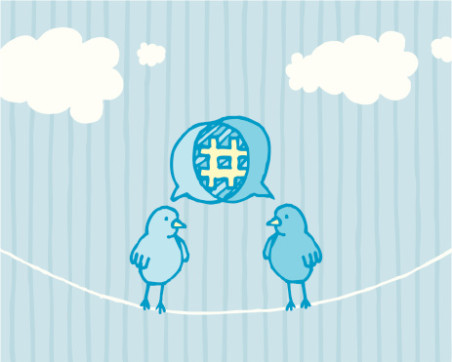More From #P2P15 | The Most Tweetable Peer to Peer Moments

I was thrilled to attend the Peer to Peer Professional Forum to swap stories and strategies with some of the finest minds in fundraising and P2P. The conference organizers stepped up their social media game in a big way this year, allowing attendees to virtually attend multiple breakouts at once.
Last week, I shared five of the most tweetable moments from the Peer to Peer Professional Forum Conference. This week I’ll share five more!
1. There’s (almost) no such thing as an overnight success
“The key ingredient for long term success is patience.” Overnight success? It takes time and hard work. @jeffshuck #P2P15 #PlentyToBelieveIn
— Plenty (@PlentyCo) February 24, 2015
During the opening session Jeff Shuck, CEO of Plenty, went “Behind the Numbers” of the Peer to Peer Thirty. Success takes time, said Shuck. Some programs seem to explode onto the scene with amazing fundraising success. In virtually all cases, that explosion was actually a long time coming. He pointed to two events that illustrate that point. Memorial Sloan-Kettering’s Cycle for Survival and St Jude’s Give Thanks Walk both started modestly in 2009, but are now raising millions of dollars. The Ice Bucket Challenge and other phenomenon aside, time and hard work drive success.
“Patience is often in short supply at the board and executive level.” I had to resist the urge to stand up and cheer at that point. Impatience is holding many nonprofits and peer to peer campaigns back. I’ve seen far too many three-year and five-year plans riddled with impressive numbers and promises, and far too few of them actually deliver. Unrealistic expectations abound and front-line fundraisers bear the brunt of that, often times blaming themselves for not generating the latest overnight success. In actuality, the blame lies with a lack of patience.
P2P Take-away: Set aggressive but rational goals, with a corresponding realistic plan to achieve them.
2. While traditional P2P events decline, high hopes are being pinned on DIY fundraising
DO IT YOURSELF session at peer to peer conference is SRO. Opportunities abound #P2P15 — MMRF Team for Cures (@MMRFTeam4Cures) February 24, 2015
For many years, “do it yourself” fundraising has taken a back seat to more traditional fundraising events. At many nonprofits, these programs were created years ago to provide some extra income without much staff involvement. These days, nonprofits are wiping the cobwebs off of these forgotten programs. Some are doing this out of necessity due to lost revenue in other areas. Others are seeing the growth of programs like The Alzheimer’s Association’s Longest Day and the World Wildlife Fund’s Panda Nation and look to emulate them.
No matter the reason, I’ve never heard more chatter about DIY fundraising than I have over the past year. Unfortunately, in some organizations, there seems to be a belief that a DIY program is somehow easy or cheap to implement. My hope is that nonprofits will pour the necessary planning, staffing and resources into these new peer to peer campaigns. Like hard work and patience, investment in DIY will play a key role in determining how many of these programs land in the Peer to Peer Thirty over the next five years.
P2P Take-away: Before treading into a DIY program, ensure that appropriate resources are available to support the venture.
3. We need to eliminate the belief that fundraising is bothersome
Well said! RT @npshana If you have an attitude that your fundraising is bothering people, you will never be successful. #P2P15
— Heller Consulting (@TeamHeller) February 25, 2015
I’m not sure where this attitude came from, but it’s something I’ve heard from fundraisers for years. Various conversations at the P2P Forum Conference also confirmed this somewhat rampant belief. I heard things like:
- We don’t want to remarket to potential participants. It’s creepy.
- We can’t send that many emails! People will complain.
- We don’t invite walk participants to our run event. That would be too much.
Why are we so afraid of “bothering” our supporters? When we say things like this, what we’re really saying is, “I personally don’t believe in this mission enough” or “We don’t do a good enough job articulating how important this cause is.” We’re also focusing on the wrong things. Instead of focusing on the amount of emails you are sending, focus on the content of those messages. If you’re worrying about bothering people, then what you have to say likely isn’t interesting.
This is common when it comes to setting up a welcome series for participants. There’s so much concentration on how many welcome messages to send and when they should be sent, and not nearly enough attention paid to the actual content of the messaging. Don’t let fear hold you back! People took an action, made a donation, visited your website or joined your event for a reason. It’s your job to help them realize that reason in a way that resonates with them.
P2P Take-away: If you’re worried about bothering your supporters, figure out a way to delight them instead.
4. Fundraising incentives can motivate action – or have the exact opposite effect.
Careful, branded incentives can strengthen a supporter’s self-label. Others can chip away at it. #P2P15 — Alex Murphy (@SirAlexMurphy) February 25, 2015
In a down-to-earth and entertaining session, Katrina Van Huss and Otis Fulton of Turnkey Promotions broke down the psychology of peer to peer fundraising. Of particular interest was their interpretation of fundraising incentives and registration discounts. Their psychology session boiled down to not “paying” your participants to fundraise and instead helping them actualize the belief that they are good people.
Help supporters believe and show off that they care by using branded fundraising incentives that are easily displayed or worn. When you start awarding things that have a monetary value or gifts that don’t reflect the cause, you begin paying them to fundraise instead of allowing them to simply be someone who cares enough to fundraise. The same holds true with registration discounts. At this point, you are putting your event on sale, and setting the expectation for more or higher discounts in the future. It also solidifies your event as a product vs. an experience.
P2P Take-away: Develop a thoughtful incentive program that helps perpetuate your fundraisers’ beliefs that they care about your cause.
5. Already looking forward to #P2P16!
Knocked it out of the park David, Robin, Megan and team! High marks for #P2P15 — ConnectedNonprofit (@ConnectedMandy) February 26, 2015
The folks at the Peer to Peer Professional Forum work tirelessly to deliver a must-attend conference each year. The event feels more like a family reunion than a conference, even for first-time attendees. It’s the perfect balance of engaging content, facilitated networking and chance hallway encounters. The conference gives us a chance to connect in person with old friends and colleagues, meet new confidantes, borrow a few new ideas and recharge our commitment to our campaigns.
P2P Take-away: Make it a point to attend #P2P16 – and join the conversation on Twitter!
